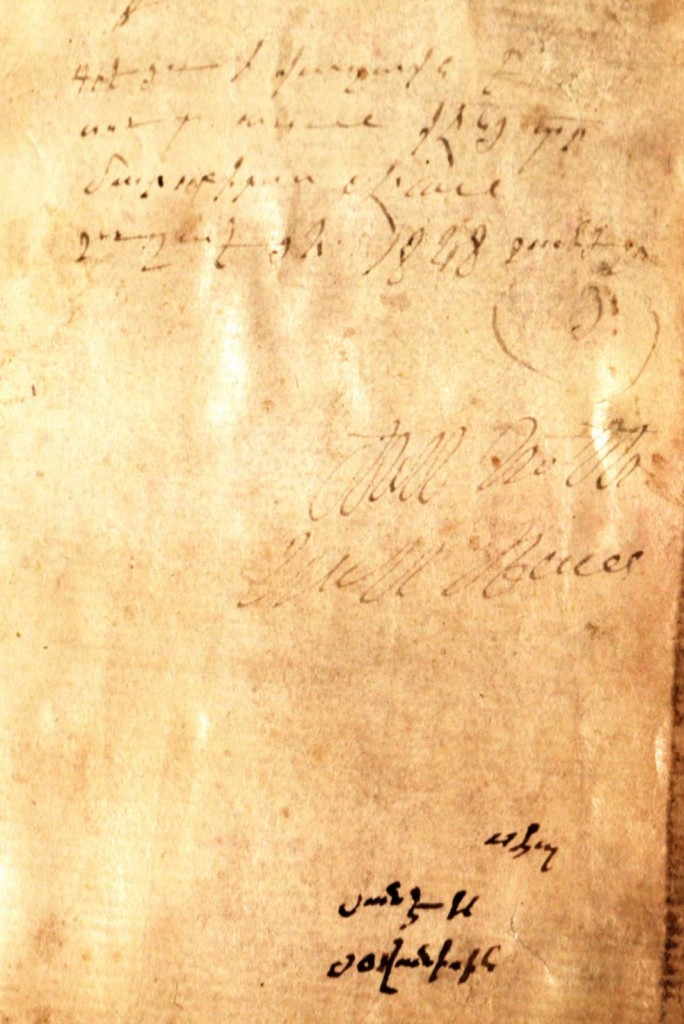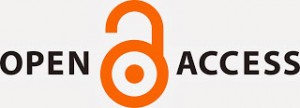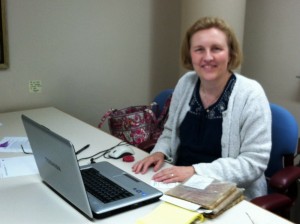Editor’s note: The following is the first in a series about a book found within Van Wylen Library’s rare book collection written by Humanities Librarian, Patrick Morgan. Part II is available here.
So, for the past few weeks I have been nursing a mild obsession (yes, these exist ) with a book we recently rediscovered among the many interesting texts in the library’s rare book collection. Here’s a photo, as a visual appetizer:
 |
| Scan of an illustration panel from a rare book in Van Wylen Library’s collection |
This is an illustration panel – one of four – from the book, which is an Armenian copy of the gospels, done on paper and in manuscript. While the illustrations are striking, there is a great deal else to say about it; so much, in fact, that I have decided to break this story into chunks. What you are about to read is the first part, which will give a little background on the genre and the interesting aspects of our copy.
Armenia is a relatively small country located between the Black and Caspian seas; it sits northwest of Iran, northeast of Iraq, east of Turkey, and south of Russia, sandwiched between Georgia and Azerbaijan. You might guess just from its location that Armenia is a kind of cultural liminal space, a natural place for the blending of very distinct cultures.
Codices in handwritten Armenian are very old by book standards, stretching back as far as the fifth century (CE, as all dates here). Collections of the gospels, likewise, have a long history in Armenian literate culture: the oldest currently known dates to the 9th century . Gospels were particularly popular because they were easier to come by and less cumbersome to carry than full bibles. It is probably not surprising, then, that gospels such as these are a well-known (if not exactly common) feature of medieval and early modern Armenian society.
Techniques for composing, illustrating, and binding these books remained remarkably stable over many years. Most use similar or even identical color schemes, and the same two varieties of Armenian script (“bolorgir,” a cursive, for the body text, and “erkatagir,” a capital uncial script, for titles). Brown calfskin laid horizontally over wooden boards predominates as a cover. Even the method for gathering and attaching the textblock , adapted from the earliest Coptic bindings, is characteristic of these gospels throughout their history.
While impressive, this continuity makes dating of specific texts tricky – at least in the absence of other dates. Many later examples are stamped, on their covers, with the name of the binder and the date of the binding. This is tremendously helpful, but limited: particularly for manuscripts, the date when a work is bound can differ significantly from the date of its composition. Additionally, crafting a hand-written and illustrated copy of these four books was a time-consuming process, meaning that the “start date” and “end date” of the manuscript’s production could be widely separated, even for years in certain circumstances.
Our book has no binder’s stamp, and the only date written inside – 1848 – is probably not the date of either its completion or its binding. To begin with, this date is visible within a longer, faded message, which lies crooked across the flyleaf; it looks like a later addition, included perhaps to indicate a purchase or gift date. This, at least, was my impression. In our records, “1848” is the only date assigned.
Now comes the part where I’m probably going to sound like I think I’m totally awesome at tackling rare books. Let me nip that in the bud right now: I don’t. I’m not. In fact, much of what follows displays rather well my ignorance and ineptitude. Nevertheless, something about that date just felt wrong. So, since I’m a librarian and I feel like I’m allowed – nay, encouraged – to devote real work time to things like this (please keep paying me, Hope College), I decided to investigate.
 |
| Handwritten inscriptions in the book |
If you’ll look at the image to the left, I’m sure you’ll notice the handwriting. I’m also pretty sure you’ll notice how different the individual inscriptions look, even though the first two are pretty well effaced. Alone, this might mean very little; an argument from differences in handwriting, especially one made by someone who admittedly knows next to nothing about handwriting forensics, is tenuous at best. However, beyond the text of the gospels themselves, many notes in numerous different hands can be found throughout the entirety. While not conclusive, it suggests the book has changed hands, and repeatedly. Of course, this, too, is no strong argument against a mid-19th century date. On the other hand, it also puts the “1848” into context, and weakens the argument for its primacy.
One thing I noticed almost immediately is the type of paper used. Take a look at the photo again. The lines that you see running across the page – if you can see them – are impressions left by a papermaking process in which pulp was spread across a metal mesh made of widely-spaced horizontal lines attached to closely-spaced vertical lines. This is “laid” paper. Around 1750, most papers began to be made using a different mesh reminiscent of a tight, flat sieve that left no such telltale markings in the sheets. This is “wove” paper. The fact that our manuscript was composed on laid paper makes a date of 1848 seem less likely.
That was fine, as far as it goes, but it still wasn’t much. I had to admit that a fair amount of my disbelief that this could be a 19th-century book came from the simple fact that it just looked too old. (This is a notoriously poor index of a book’s age, but visceral reactions are hard to suppress.) Ironically enough, some books from the mid- to later- 1800s can look older than books produced a century earlier. This is primarily due to new techniques of mass-production and the increased use of wood pulp in papermaking, including the making of pasteboard (glued layers of crude paper pressed together) as a binding material, which is far from robust.
I initially thought the fact that this was a manuscript and not printed made an early date more likely. Actually, Armenian texts like these were composed by hand for centuries after the development of movable type, which is a good example of the continuity of this textual tradition. It wasn’t until the 1700s that print gospels began to rival their handwritten counterparts in popularity, and even afterward, manuscripts never truly went out of style.
So far, nothing was even close to conclusive. I needed a new plan of attack.






